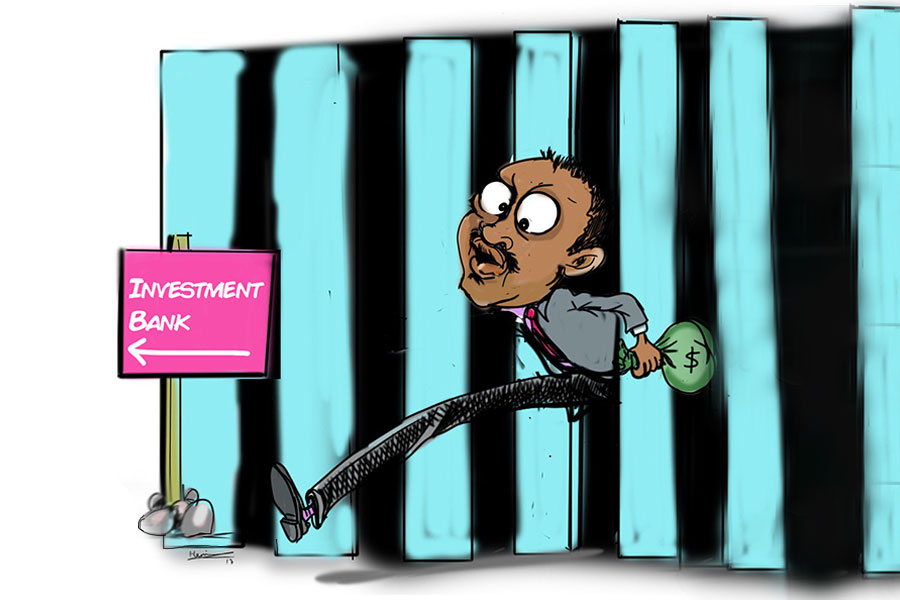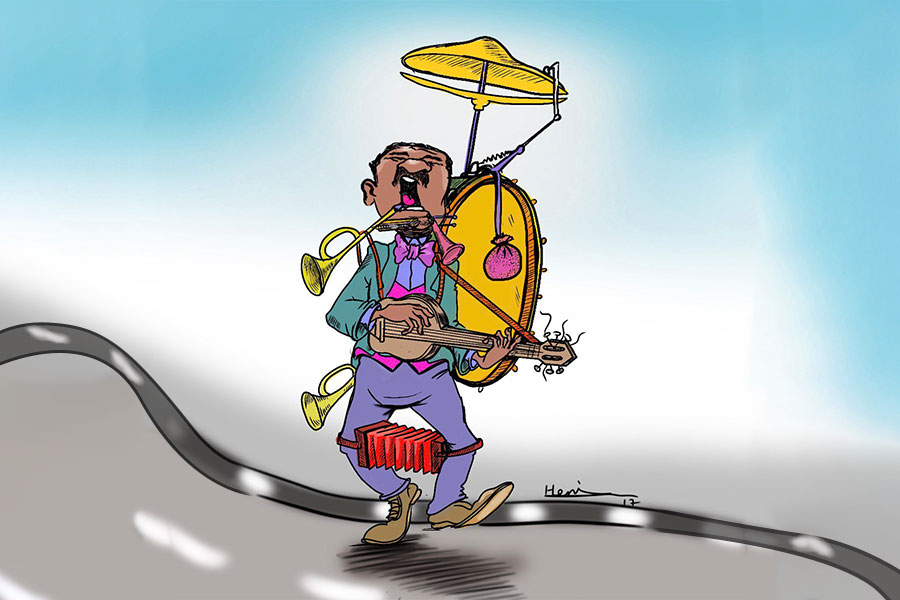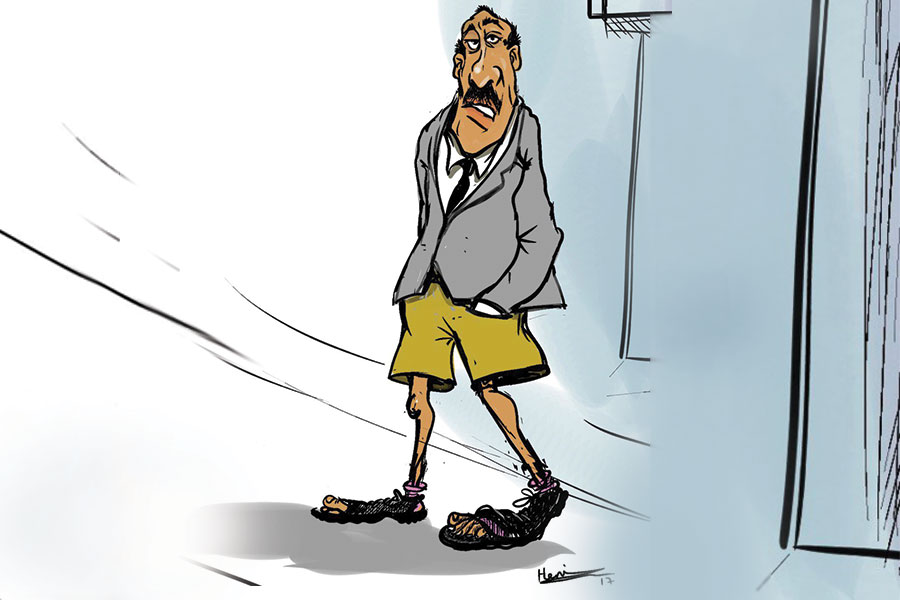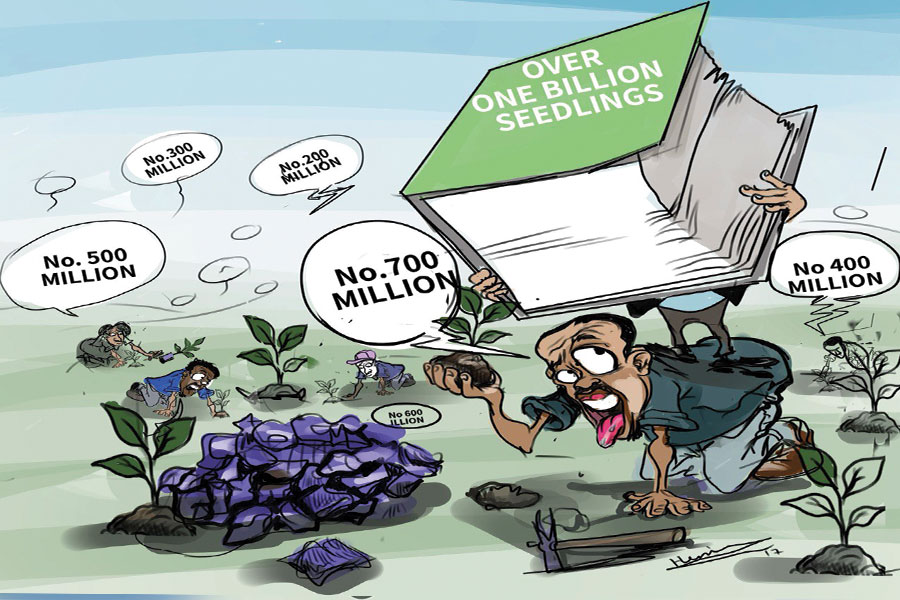
Jun 21 , 2025.
The foreign exchange market tiptoed through last week, exposing small cracks in the managed currency regime. Posted quotes from more than a dozen commercial banks, set beside the National Bank of Ethiopia’s (NBE) own numbers, showed how the banks tried to balance official guidance with the hard task of finding scarce dollars.
The most apparent split ran between two commercial banks.
On Saturday, June 21, the Commercial Bank of Ethiopia’s (CBE) buying quote sat at 131.50 Br to the dollar, the lowest for the week and among the lowest on record this year. Oromia Bank, by contrast, continued to pay 135 Br, a premium it had offered for almost two months.
Market watchers saw the gulf signalling diverging tactics. CBE appears to be intent on limiting its dollar liabilities, while Oromia is bidding aggressively to meet its near-term obligations.
Across the market, averages told a calmer story. Banks paid roughly 132.11 Br for each dollar and sold at about 134.87 Br, leaving a tight spread of 2.76 Br. Most private banks clustered around that midpoint.
The Bank of Abyssinia, Awash, Wegagen and Zemen rarely moved more than a few tenths of a Birr, parking purchase quotes in the mid-132 Br, and sales quotes in the mid-134 Br. Dashen paid a touch more, about 132.16 Br, apparently to keep its name in front of corporate exporters hunting for a price.
A composite ranking that rewards higher buying prices and lower selling prices puts the Central Bank on top with an average purchase quote of 134.79 Br and a sale quote of 134.86 Br. Its screen rates, however, act more like a lighthouse than a trading desk. Behind it came the Bank of Abyssinia, CBE, Cooperative Bank of Oromia (Coop Bank) and Dashen, locked in a statistical tie.
Patterns become sharper when daily movements are compared. On the buying side, CBE, Dashen, and Coop Bank followed almost identical lines, revealing a similar assessment of risk. The Central Bank’s quote drifted on its own, reinforcing its role as a reference rather than a participant.
Selling prices, by contrast, moved almost in unison, a sign that unwritten rules keep margins predictable.
CBE’s reluctance to raise its buying rate, even as the Birr weakened, revealed that the Bank is willing to lose flows rather than overpay. Oromia Bank’s rich bid suggests heavy dollar demand within its books or among clients who may have been unable to wait. It shows how tight their position must be.
A bigger gap opened two days earlier at the Central Bank’s foreign-exchange auction. Eleven banks pursued 50 million dollars, and the weighted average clearing price reached 136.62 Br, more than two Birr above the industry average last week. The delta revealed a split between a formal auction that channels dollars to priority importers and a street market serving travellers, remitters, and the parallel forex market.
Analysts group the market into three camps.
The cautious cohort — CBE, Coop Bank, and Dashen — posted lower purchase prices, reflecting either thin dollar reserves or tight risk limits. The aggressive set — Oromia Bank, the Central Bank and Lion Bank — paid a premium, signalling pressing payout schedules. Everyone else sits in the middle, inching rates only when the leaders move.
Headwinds remain stiff. Export earnings and diaspora remittances are soft, while import demand for fuel, fertilisers, machinery, and consumer goods continues to swell. The Brewed Buck’s slide, still orderly, has steepened enough to raise fears of pass-through inflation once new shipments land.
Dashen’s small premium seems designed to stay competitive without starting a price war. CBE’s rigidity appears to be a bet that its balance sheet and state backing would keep retail clients in line. Oromia Bank’s pitch, meanwhile, has become a noteworthy outlier.
For now, a fragile equilibrium holds. Spreads are firm, daily swings are small, and the Brewed Buck keeps easing in measured steps. However, the divergence between auction and retail rates, and the extremes staked out by CBE and Oromia Bank, has unveiled tension that is building rather than easing.
Abyssinia and Awash banks adjusted their selling quotes in near lockstep, moving from 134.70 Br to under 135 Br after June 19. Analysts see the pattern as proof that a ceiling around 135 Br is understood, if not officially declared, the same invisible line that capped bids back in February when the Birr flirted with 133 Br.
PUBLISHED ON
Jun 21,2025 [ VOL
26 , NO
1312]

Photo Gallery | 139717 Views | May 06,2019

My Opinion | 134037 Views | Aug 14,2021

My Opinion | 130596 Views | Aug 21,2021

Photo Gallery | 129974 Views | Apr 26,2019

Aug 23 , 2025
Banks have a new obsession. After decades chasing deposits and, more recently, digita...

Aug 16 , 2025
A decade ago, a case in the United States (US) jolted Wall Street. An ambulance opera...

Aug 9 , 2025
In the 14th Century, the Egyptian scholar Ibn Khaldun drew a neat curve in the sand....

Aug 2 , 2025
At daybreak on Thursday last week, July 31, 2025, hundreds of thousands of Ethiop...